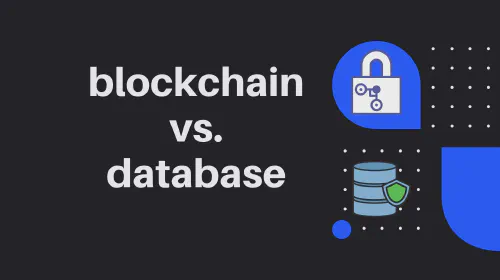How Blockchain Technology Enhances Provenance
Salomon Kisters
Nov 25, 2020This post may contain affiliate links. If you use these links to buy something we may earn a commission. Thanks!
Despite the fact that blockchain technology has been around for several decades, many people still confuse the term and think it is actually the ‘Bitcoin’. But that’s not true. See, blockchain is just the underlying technology for cryptocurrencies, and the reason why many people still confuse the terms is that crypto and blockchain technology gained momentum at the very same time in 2009.
However, if you look at it, blockchain is quite a generic technology and has the potential to serve an array of industries due to its ‘practical’ advantages. Provenance happens to be a crucial demand for many sectors in the world and in some cases (e.g. supply chain) entire business models depend on provenance.
Therefore, in this article, we will have a look at how data provenance and the issues related to it can be efficiently resolved by blockchain technology.
What is Provenance and Why Do We Need it?
In short, the term provenance refers to the earliest known history of something and in a digital or rather a business environment, it means maintaining the complete documentary evidence of an entity that can be used to prove its legitimacy later, if required.
The reason why everyone needs provenance in one way or another is that the internet has become quite sophisticated and while there are so many good things happening around, the probability of forging, reproducing, or stealing something is too high.
Where provenance is needed

In the specific case of data, provenance refers to the tracking mechanism where every single change made to the original data is tracked and versioned so the authorized viewers can be certain about its legitimacy. As a result, systems that follow provenance become the single source of truth and people do not have to ‘ask everyone’ as to what’s true and what’s not. Now that you have understood the utility of provenance, it would be easier for you to understand why this phenomenon is so important for pretty much every industry, but the following ones in particular:
- Academic research
- Supply chain
- User authentication
- Legal pieces of evidence
The Cross of Blockchain Technology and Provenance
Just to set the perspective before discussing a variety of use cases in this section, please note that due to the immutable and decentralized nature of blockchain technology, it can enhance the idea of provenance and make it much more ‘concrete’.
To make things more precise, we gathered some examples of Use Cases.
Health Monitoring Systems
These types of use cases require an utmost level of trust and this demand is further strengthened when we use blockchain technology. Let’s say that a patient visits a hospital with chest pain and the emergency department immediately gives some treatment but the patient dies 3 hours after the incident and the family sues the hospital, complaining that they did not perform the required procedures.
Now there are only two possibilities here. Firstly, the doctors did not record anything while treating the patient – in this case, they are doomed by the court. Secondly, the doctors did record every step and dosage of the medicine, but the records have been tampered by their superiors just so they don’t get charged.
However, if we bring this data on the blockchain, nobody can deny the medication provided to the patient or his vitals when he came in the emergency. It also allows the investigators to track the data and determine what particular thing or variable actually caused the incident.
Digital Forensics
It’s quite a fascinating field in itself and when we couple provenance and blockchain, its benefits to digital forensics are unimaginable. For instance, if an automobile gets in an accident while running on autopilot, there is nobody whom you can ask the reason for the accident. Therefore, you always have to rely on data generated by thousands of sensors on the vehicle.
Since hackers are also becoming stronger, it is quite possible that someone hacks the onboard computers, cause the accident, and then wipe off everything that could potentially lead back the investigators to them.
So, this is yet another area where blockchain could prove very useful by ensuring that once specific data is committed to the ledger, it can never be deleted by even the best hackers. Thus, giving the investigators an opportunity to find the real culprit or at least identify the reason for a crash.
When the automobile industry adopts it as a norm, every car that comes out of the showroom would have blockchain technology embedded and therefore, the provenance will be maintained right from the time the car starts completing its first mile on the road.
It will not only help investigators, but even the insurance companies would feel relieved as they will never feel deceived and can always bring up the records with confidence. This framework will eventually bid farewell to the environment of distrust and of course, disputes as well.
Document Verification
Tampering with a document is probably the easiest thing anyone can do on the internet and this problem can also be addressed with the help of blockchain technology and quite a decent solution is provided in this regard by OriginStamp.
See, whether you happen to be a regular internet user, a government contractor, or a lawyer, your life revolves around paperwork and you need to have a track of it.
If you look at it from the end-user perspective when you download research from somewhere, do you have any guarantee as to whether it’s fully authentic or original? No, you just take someone’s word for it and believe the research. You don’t even know whether the researcher had originally written this or not.
However, this can easily be avoided by bringing the entire records of documents on blockchain technology.
If you are thinking about using this platform to secure your documents or other files, it is actually quite simpler. Basically, you just have to upload the relevant documents (please note that bulk upload is also available) and the system timestamps it immediately. After that, the details are recorded on the blockchain and no one has the permission to forge its stamp or add anything to the document. Therefore, your readers will always be able to differentiate your real documents from the fake ones.
A detailed Step-By-Step guide can be found here.
Supply Chain
Many people seem confused about it, so let’s just skim through it first. Basically, the supply chain comprises several organizations, companies, vendors, products, and IT systems, and together these elements help transport (a variety of products) from one place to another. If you want to have an estimate about its massiveness, please note that the International supply chain industry is expected to hit a worth of about 29040 million USD towards the end of 2025.
Now that you have understood the scale that we are talking about, it would be easier to understand why blockchain-based provenance is so important in the industry.
Basically, when products (worth billions of dollars) move from one continent to another, it is simply insane not to track them. Therefore, companies have been tracking their shipments digitally for several decades. However, since these systems are maintained by centralized servers and management, it is a piece of cake for authoritative people to override any data and make their counterparty suffer losses in billions of dollars.
In order to avoid this and ensure every stage of the supply chain is properly tracked and traceable, blockchain technology can prove quite useful. Apart from preventing financial losses, it has several other pros as well – for instance, when medicines are transported Internationally, they do not have to be authentic, but many need to be kept at a certain temperature or they lose their efficacy. This is yet another domain that blockchain can address by maintaining the provenance in terms of all metrics (i.e. time, personnel involved, temperate, shipping duration, tampering with labels, etc.).
Art
This industry is probably the most aggressive and passionate adopter of blockchain technology as artists often suffer from counterfeiting and forgery. Therefore, almost every artist seems eager about using the blockchain technology to ensure the ownership history of their work can be traced and the real artist behind a masterpiece gets credited, instead of their competitors stealing the show for his efforts.
See, this industry has a lot of money! Literally a lot! However, in the past, many criminals found this lucrative opportunity and faked entire masterpieces to earn millions of dollars. If we had blockchain technology back then, this could have easily been avoided as the buyers would have the luxury to review the legitimacy or rather provenance of a painting while buying from someone.
This use case works quite similar to the one offered for document verification by OriginStamp. Once the artists have created something and it’s ready to be sold in the open market, they can stamp their work and incorporate their signatures on the file so everyone can link back to them.
Stay informed with the latest insights in Crypto, Blockchain, and Cyber-Security! Subscribe to our newsletter now to receive exclusive updates, expert analyses, and current developments directly to your inbox. Don't miss the opportunity to expand your knowledge and stay up-to-date.
Love what you're reading? Subscribe for top stories in Crypto, Blockchain, and Cyber-Security. Stay informed with exclusive updates.
Please note that the Content may have been generated with the Help of AI. The editorial content of OriginStamp AG does not constitute a recommendation for investment or purchase advice. In principle, an investment can also lead to a total loss. Therefore, please seek advice before making an investment decision.

Blockchain vs Database: Key Differences Explained
Understand the key differences between Blockchain and Database, from decentralization to security, in this detailed comparison.

Defensive Publication as an Intellectual Property Protection Method
Protecting intellectual property is essential for every business. Read what a defensive publication is and how it can protect intellectual property from others?

Digital Signatures: The Digital Equivalent of Signing a Paper
Learn about digital signatures, the digital equivalent of signing a paper or putting a thumb impression, used for authenticity and security in the digital world.
Protect your documents
Your gateway to unforgeable data. Imprint the authenticity of your information with our blockchain timestamp